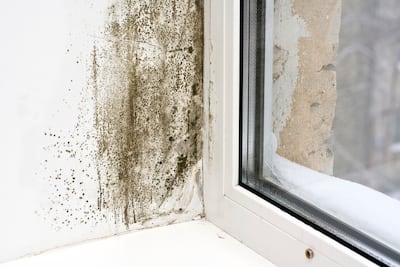One in three UK households are living in poorly insulated properties blighted by cold and damp, and are unlikely to be able to afford the cost of improvements, analysis has found.
A report by the Institute of Health Equity and Friends of the Earth, based on the English Housing Survey, categorises poorly insulated homes as those with an Energy Performance Certificate (EPC) rating of below C. This means they probably do not have double-glazed windows, LED lights or an efficient boiler.
The 9.6 million households, about 34 per cent of the national total, have an income which fails to meet the Joseph Rowntree Foundation’s minimum standard for decent living, defined as £50,000 between a couple with two children.
Those living in such homes are said to be at far higher risk of developing physical and mental health problems.
The findings come as it was revealed on Friday that most British household energy bills will fall from April after regulator Ofgem cut its domestic price cap by 12.3 per cent to its lowest level since Russia invaded Ukraine two years ago.
The new cap of £1,690 ($2,140) a year for average use of electricity and gas is down £238 from the previous cap of £1,928.
The drop, prompted by lower wholesale energy prices, will provide some respite for households struggling to contend with the cost-of-living crisis while also helping to help curb inflation.
The latest report comes after the opposition Labour Party slashed its green energy plans from £28 billion a year to only £4.7 billion, which will significantly reduce its funding for a home insulation scheme. The party had previously promised to spend £6 billion a year to insulate 19 million homes over 10 years if it was in government.
Research shows the UK has some of the oldest and least efficient housing in Europe.
The report recommends the government pledges £74.5 billion to carry out a 10-year retrofit programme to address energy-inefficient housing for those on low incomes.
Sir Michael Marmot, the director of the UCL Institute of Health Equity, told The Guardian the steep number of people living in cold homes was a “national disgrace”.
He said: “Cold homes are a public health hazard: those living in them have much higher risk of developing poor physical and mental health and this is adding burden on to an already overstretched NHS, and contributing to poor productivity.
“We need urgent action to address poverty, the cost of fuel and to insulate the homes of the poorest, not just because the government has a moral duty to look after the health of its population, but also, frankly, because it makes economic sense, too.”

Mike Childs, the head of science, research and policy at Friends of the Earth, told the newspaper: “There’s no getting away from the enormity of the cold homes crisis and the impact it’s having on millions of lives.
“Given the sheer scale of the problem, we need to see transformative levels of investment and action, to stem the huge social and economic costs of cold homes and ensure our internationally agreed climate targets are met.”
A government representative told said the figures “did not take into account homes which have some, but not all, of the insulation measures”.
They added: “Everyone has the right to a warm, secure and decent home – almost half of all homes in England now have an EPC rating of C or above, up from just 14 per cent in 2010.
“We will continue to build on this success and have invested further funding to upgrade more than 300,000 of Britain’s least energy-efficient homes.”


